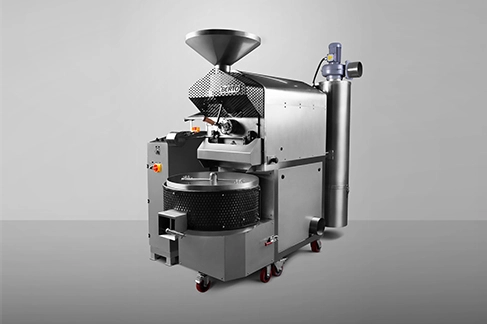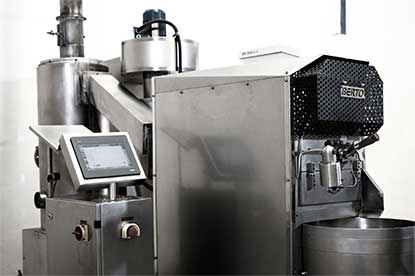Understanding Drum Speed in Coffee Roaster Machines
When roasting coffee, every coffee roaster knows that there are three important variables to create the ideal roast profile: time, temperature, and airflow. Roasters always try to keep these three variables in their optimum proportion in order to reach the desired roast profile. However, there is a fourth variable that is often overlooked, which is the drum speed inside the coffee roasting machine.
The Definition of Drum Speed
A drum-style roaster has a roasting chamber that rotates to turn the coffee beans again and again during the roasting process. Drum roaster speed is defined by the speed at which the drum rotates inside the roasting chamber, measured by Revolutions Per Minute (RPM). As the drum turns, the coffee beans are rotated inside. The slower the drum speed, the coffee beans are turned less, and the faster the drum speed, the more coffee beans are turned.
Why Is Drum Speed Important?
Inside the roasting machine, the green coffee beans are exposed to both direct and indirect heat. The direct heat is when the beans are in contact with the hot wall of the drum (conductive heat), and indirect heat is from the warm air around the drum (convective heat). Convective heat transfer is considered more efficient as the heat penetrates and roasts the coffee beans from the inside out. Click here to read more about heat transfers inside the drum roaster.
The drum speed has an impact on how long the beans make contact with the drum wall, and also the fall time (the brief cooling time as the coffee beans tumble inside the drum). The slower the rotation speed, the longer the coffee beans are in contact with the direct heat from the wall. This means a greater risk of over-roasting and the result is scorched beans that carry an undesirable burnt flavor. On the other hand, if the drum roaster speed is too high, the beans will continue to be pushed against the drum wall by its centrifugal force and it may never drop.
How To Manage Drum Speed Efficiently
A coffee roaster’s job is to establish constant and uniform heat transfer from the roasting machine to the coffee beans. Just as coffee roasters adjust the temperature at different stages of coffee roasting, the drum speed can be used to help develop flavor and aroma. There is no set rule about how fast or how slow the drum speed should be, but in general the bigger the drum barrel, the slower it should run.
Coffee roasters achieve the desired roast profile using the variables of time, temperature, and airflow to work in an optimum ratio. By manipulating it correctly, the drum roaster speed can affect the overall temperature in the drum chamber, how the coffee beans interact with the airflow, and the coffee roasting time as well. All three variables of the roast are affected by the change in drum speed, and ultimately the taste of the roasted coffee beans.
Many commercial coffee roasting machines now have the ability to adjust the speed at which the drum rotates. This means coffee roasters are able to control how the beans are rotated inside the drum and how the two methods of heat transfer (conductive and convective) are affecting them. But even if the roasting machine had a fixed drum speed, coffee roasters should make sure that their machine runs at a steady speed by noting the RPM and checking it from time to time.
Berto Roasters offers smart drum roasting machines made for small to medium scale cafes and coffee roasters. Aside from their tough yet stylish stainless steel body, advanced functions, and superior safety settings, Berto Roaster machines also have variable drum speed that coffee roasters can experiment with to achieve their desired roast profile. Available in several different sizes, Berto Roasters have all the right features so you can focus on growing your business.



